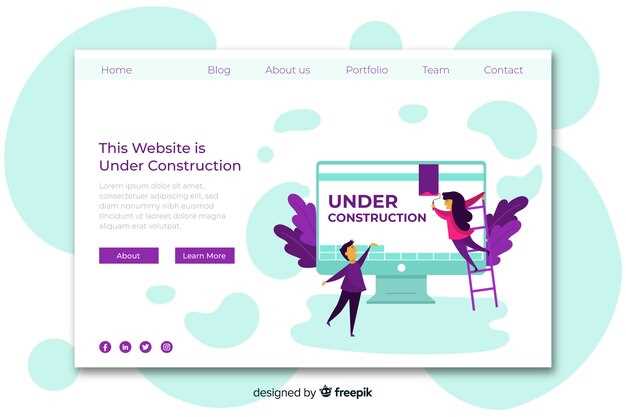
Every creation has a story behind it, a unique journey filled with challenges, achievements, and insights. In our blog community, we believe that sharing these stories not only inspires others but also fosters a deeper connection among builders, makers, and innovators. Whether you’re a seasoned professional or a hobbyist, your experiences can illuminate paths for fellow creators.
Expressing your build story allows you to showcase the thought process and techniques that shaped your project. From the initial concept to the final touches, each phase of your build is a testament to your skills and creativity. By contributing to our blog, you have the opportunity to share invaluable lessons learned, tips, and tricks that can significantly benefit others in their own journeys.
Moreover, participating in our community helps create an environment of collaboration and support. When you open up about your successes and setbacks, you invite others to engage, ask questions, and share their own experiences. This exchange not only enhances individual knowledge but also strengthens the entire community, making it a richer resource for everyone involved.
How to Structure Your Build Story for Maximum Engagement

Structuring your build story effectively is essential to captivate your audience. Start by defining the core message you want to convey, ensuring it aligns with your audience’s interests and values.
Begin with a compelling hook. An engaging introduction captures attention and sets the tone for your story. This could be a surprising fact, a personal anecdote, or a thought-provoking question that resonates with your readers.
Next, outline the challenges faced during the build process. Be honest and transparent about obstacles you encountered. This adds authenticity and relatability to your narrative. Share specific examples that highlight your problem-solving skills and perseverance, allowing readers to connect with your journey.
Integrate key milestones to demonstrate progress. Highlighting significant achievements along the way keeps your audience engaged and encourages them to celebrate your successes with you. Use visuals, such as charts or timelines, to enhance understanding and retention of important points.
Include a section on lessons learned. Reflecting on your experiences provides valuable insights for your audience. Share what worked well and what didn’t, emphasizing the importance of growth and adaptation throughout the build process.
Finally, wrap up your story with a call to action. Encourage readers to share their own experiences or engage with related content. Providing a clear takeaway will help sustain interest and foster a sense of community among your audience.
Tips for Showcasing Your Build Process Through Images and Videos
Visual storytelling plays a crucial role in engaging your audience and effectively conveying your build process. Here are some tips to enhance your presentation through images and videos.
1. Capture Each Stage of the Build
Document every phase of your project, from initial planning to final touches. This progression helps viewers understand your workflow and the effort required in each step.
2. Use High-Quality Images
Invest in good photography. Use natural lighting and a reliable camera to ensure clarity. Avoid cluttered backgrounds to keep the focus on the build.
3. Create Time-Lapse Videos
Time-lapse videos compress hours or days of work into a few minutes, providing an engaging overview of the build process. Use software to speed up the footage, emphasizing key moments.
4. Highlight Key Techniques
When filming or photographing intricate details, focus on specific techniques or tools. Use close-up shots or slow-motion edits to draw attention to craftsmanship and skill.
5. Offer Commentary
Adding voice-over or captions can clarify complex processes. Describe what you’re doing and why, providing insight into your creative choices and problem-solving methods.
6. Organize Your Content
Structure your images and videos in a logical flow. Consider grouping related processes or using a timeline format to guide viewers through your build effectively.
7. Engage with Your Audience
Encourage comments and questions about your build. Interactive engagement can foster a community around your work and provide valuable feedback.
8. Edit Thoughtfully
Cut unnecessary footage and focus on important moments. Utilize editing software to enhance video quality, add transitions, and ensure a cohesive presentation.
9. Use Before-and-After Shots
Showcasing the transformation of your work can be very powerful. Before-and-after comparisons can clearly illustrate the impact of your efforts.
10. Share on Multiple Platforms
Different social media platforms offer various formats for sharing your content. Tailor your presentations to suit the audience and constraints of each platform, whether it’s Instagram, YouTube, or a personal blog.
By following these tips, you can effectively showcase your build process and inspire others within your blog community.
Best Practices for Encouraging Feedback and Interaction from Readers

Creating a dynamic relationship with your readers is essential for the success of your blog. Encouraging feedback and interaction not only enriches the content but also fosters a sense of community. Here are some strategies to enhance reader engagement:
1. Ask Open-Ended Questions
Incorporate open-ended questions at the end of your posts to invite thoughtful responses. Encourage readers to share their experiences, opinions, or solutions related to the topic discussed. This approach stimulates discussion and allows diverse perspectives to emerge.
2. Respond to Comments Promptly
Timely responses to comments show readers that their input is valued. Make an effort to acknowledge each comment, whether it be a simple thank-you or a more detailed reply. This interaction encourages future engagement, as readers feel more connected to the community and the author.
3. Use Polls and Surveys
Implementing polls or surveys can be an effective way to gather reader opinions and preferences. This not only provides valuable insights for future content but also invites readers to actively participate in shaping the blog’s direction.
4. Create Shareable Content
Develop content that resonates with readers and encourages them to share it within their networks. Infographics, compelling stories, or actionable tips are more likely to be shared, extending your reach and inviting further discussion in the comments.
5. Highlight Reader Contributions
Feature reader comments or insights in your future posts to recognize their contributions. This not only validates their input but also motivates others to participate, knowing their voices might be showcased.
6. Host Q&A Sessions
Organize Q&A sessions where readers can pose questions directly to you. This invites real-time interaction and makes readers feel more involved. Address their queries in dedicated blog posts or live sessions, reinforcing community connection.
7. Foster a Safe and Respectful Environment
Ensure that your blog is a welcoming space for discussions. Set clear guidelines for respectful interactions and actively moderate comments to maintain a positive atmosphere. This encourages readers to express their thoughts freely without fear of negativity.
By implementing these best practices, you can effectively encourage feedback and interaction, transforming your blog into a vibrant community where readers feel heard and valued.











